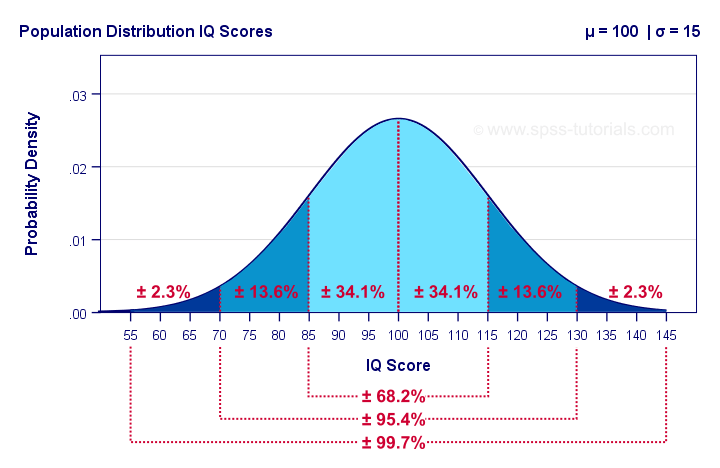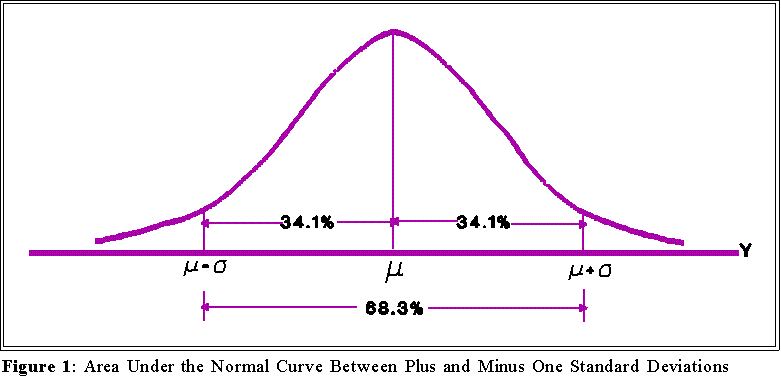How To Find Percentage Area Under Density Curve
As we usually use decimals in probabilities you can also say that the area is equal to 1 because 100 as a decimal is 1. The area under the curve is equal to 100 percent of all probabilities.
Area Under The Curve Calculator
If youre behind a web filter.

How to find percentage area under density curve. The curve will never dip below the x-axis. The area below the density curve is the whole of all probabilities in the given probability distribution. The area under the curve always adds up to 100.
Locate 13 in the column for z on the left side of the table and locate02 in the row for z at the top of the table. In previous examples we started with the z-score and were looking for the percentage. The area under the density curve that lies to the right of 16 is 0536.
A density curve is a graph that shows probability. Calculate the area under regions of simple density curves. What percentage of all possible observations of the variable are at most 16.
Finding the z-score that corresponds to a given Percentile area shaded to the left of the z-score. Density curves have the following properties. Introduction to Relative Frequency Histograms.
And then we can take that z-score and use the mean and the standard deviation to come up with an actual value. The entire area under this density curve under any density curve is going to be equal to one and so the entire area is one. ϕx 1 2π e1 2x2 ϕ x 1 2 π e 1 2 x 2 The 1 2π 1 2 π factor in this expression ensures that the total area under the curve ϕx ϕ x is equal to one.
Area probability 0 Normal distribution or Gaussian distribution according to Carl Friedrich Gauss is one of the most important probability distributions of a continuous random variable. Properties of Density Curves. If we want to know how much of our data falls within a certain interval then we want to look at the amount of total area that falls under the curve within that interval.
Its easy to approximate the median quartiles by eye. Density values can be greater than 1. The area of a triangle is calculated by multiplying the height of the peak times its width at half height.
However we can divide 132 into 13 and02. If youre seeing this message it means were having trouble loading external resources on our website. Find the percent of the area under the density curve where x is less than 2.
The third quartile of a density curve is the value with 075 area under the curve to the left of it. Area under the density curve 10. The density curve can represent the relative frequency of a dataset and can visualize datasets of any size.
The 1 2 1 2 in the exponent ensures that the distribution has unit variance and therefore also unit standard deviation. First the area under a density curve will always represent 100. This area is therefore equal to 10.
Normal distribution is important in statistics and is often used in the natural and social sciences to represent real-valued random variables whose. Well then we just subtract that from one to get this blue area. So what we can do we can use a z-table to say for what z-score is 70 of the distribution less than that.
Keep these two facts in mind when you create or interpret density curves for different distributions. The first quartile of a density curve is the value with 025 area under the curve to the left of it. Worked example finding area under density curves.
In the frequency histogram the y-axis was percentage but in the density curve the y-axis is density and the area gives the percentage. So this is going to be one minus 084 or Ill say approximately and so thats going to be approximately 016. This time were looking for the percentage.
The above density curve is a graph of how body weights are distributed. The area can be approximated by treating the peak as a triangle. This green area is 84 or 084.
Calculate the area under regions of simple density curves. Of the data or 10. Find the area under the curve between z 0 and z 132 Looking at the table we can see that 132 is no where to be found.
Mathematics 16112020 0700 MuntazerMehdi9746 Find the percent of the area under the density curve where x is less than 3. Divide the area under density curve into 4 equal parts. The area below the density curve will always be 10.
When creating the density curve the values on the y-axis are calculated scaled so that the total area under the curve is 1. The curve will never dip below the x-axis.
 The Normal Distribution Curve And Its Applications The Normal Distribution Or Bell Curve Is Most Familiar And Useful Toteachers In Describing The Frequency Of Standardized Test Scores How Manystudents Earned Particular Scores This Is Not Just Any
The Normal Distribution Curve And Its Applications The Normal Distribution Or Bell Curve Is Most Familiar And Useful Toteachers In Describing The Frequency Of Standardized Test Scores How Manystudents Earned Particular Scores This Is Not Just Any
 Normal Distribution Statistics The Ultimate Guide
Normal Distribution Statistics The Ultimate Guide
 Public Management Statistics Class 12 Notes
Public Management Statistics Class 12 Notes
 Normal Curve With Percentage Under The Curve For Each Standard Deviation Standard Deviation Technical Analysis Charts Ap Calculus
Normal Curve With Percentage Under The Curve For Each Standard Deviation Standard Deviation Technical Analysis Charts Ap Calculus
 Population Mountains Population Density Curve In Cities City Artwork Abstract
Population Mountains Population Density Curve In Cities City Artwork Abstract
 Use Percentages Associated With Normal Distributions To Solve Problems Normal Distribution Teaching Math Standard Deviation
Use Percentages Associated With Normal Distributions To Solve Problems Normal Distribution Teaching Math Standard Deviation
 Life Of Engineering Student Intellectus 7 12 16 Ap Statistics Part Two Engineering Notes Statistics Notes Ap Statistics
Life Of Engineering Student Intellectus 7 12 16 Ap Statistics Part Two Engineering Notes Statistics Notes Ap Statistics
 Regression To The Mean Data Science Learning Physics And Mathematics Bell Curve
Regression To The Mean Data Science Learning Physics And Mathematics Bell Curve
 Visualisation Mode Median Mean Probability Density Function Wikipedia Statistics Math Math Methods Teaching Math
Visualisation Mode Median Mean Probability Density Function Wikipedia Statistics Math Math Methods Teaching Math
 Local Variations Of The Density Of A Random Point Distribution Grasshopper Parametric Design Grasshopper Rhino Generative Design
Local Variations Of The Density Of A Random Point Distribution Grasshopper Parametric Design Grasshopper Rhino Generative Design
 Worked Example Finding Area Under Density Curves Ap Statistics Khan Academy Youtube
Worked Example Finding Area Under Density Curves Ap Statistics Khan Academy Youtube
 Median Mean And Skew From Density Curves Video Khan Academy
Median Mean And Skew From Density Curves Video Khan Academy
 Normal Distribution Explained Simply Part 2 Normal Distribution Standard Deviation Explained
Normal Distribution Explained Simply Part 2 Normal Distribution Standard Deviation Explained
 Density Curves Video Khan Academy
Density Curves Video Khan Academy
 How To Calculate A Sample Standard Deviation Statistics Math Standard Deviation Studying Math
How To Calculate A Sample Standard Deviation Statistics Math Standard Deviation Studying Math
 How To Determine Percent Error From A Graph Graphing Chemistry Class Chemistry
How To Determine Percent Error From A Graph Graphing Chemistry Class Chemistry
 A Example Of 95 Confidence Interval Problem Matematica
A Example Of 95 Confidence Interval Problem Matematica
 A Solution Template To Help In Hypothesis Testing Data Science Learning Statistics Math Statistics Notes
A Solution Template To Help In Hypothesis Testing Data Science Learning Statistics Math Statistics Notes
 Statistics Z Scores Students Will Identify The Percent Of Area Under Any Normal Curve That Is 1 2 Or 3 Standard Deviation Un Math Math Formulas Statistics
Statistics Z Scores Students Will Identify The Percent Of Area Under Any Normal Curve That Is 1 2 Or 3 Standard Deviation Un Math Math Formulas Statistics
Post a Comment for "How To Find Percentage Area Under Density Curve"